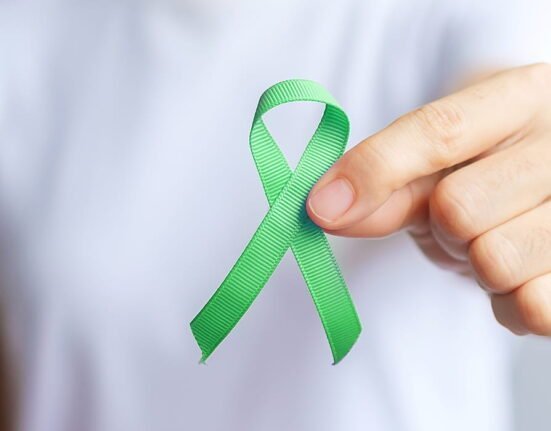Princess Diana of Wales is the epitome of compassion and grace and is known for her humanitarian work and ability to connect with people around the globe. Yet, shining beneath the surface of her public persona, there is a long struggle. Among these was a battle with bulimia nervosa for almost a decade, an eating disorder, and, at times, a symptom of her unhappiness and at times her coping mechanism. Diana walked straight through the boundaries of taboos in society when she talked about her struggles, thus initiating a paradigm shift in the views and treatment of mental issues, especially eating disorders.
The Origins of Diana’s Struggle
The origin of Princess Diana’s struggles with bulimia nervosa, a serious eating disorder, is often traced back to her compromises with personal, relational, and societal pressures that shaped her life in the public eye or as we see in the media. Understanding the factors that lead her to battle with the eating disorder shows the root cause and psychological distress that such a disorder causes to a person.
Early Life
Diana Spencer was raised in an aristocratic family and was privileged but at the same time had a emotionally stressful upbringing. She was affected by the abandonment and instability caused by her parents’ divorce when she was eight years old. Despite having grown up in an environment filled with material wealth, Diana may have faced difficulties due to a lack of sensitivity, perfectionist traits and lack of emotional security around her. People with eating disorders often show perfectionism and a will to live up to others’ standards.
Pressures of Royal Life and Marriage
It started when she was engaged to Prince Charles at the age of 19. Diana moved into the British royal family after her engagement. Suddenly from being a private individual to one of the most scrutinized women in the world, there was constant public attention upon her. The most trying environment was brought on by the strains of the publicity and pressure within the publicly promoted marriage as well as the idealized expectations to be perfect.
Reports have it that she first fought bulimia when she was engaged, where her sense of control was strained. Diana says that her eating disorder started with remarks she got regarding her appearance. In the biography Diana: Her True Story, She revealed that it was Prince Charles’s remark that she was “a bit chubby” during their engagement that had an indelible impact on her. Their comments weren’t harsh all the time, yet internalized standards of beauty and inadequacy took root within her.
Read More: Women’s Day: Unrealistic Beauty Standards and Mental Health
Emotional Triggers and the Cycle of Bulimia
The development of bulimia nervosa usually starts with emotional difficulties. Diana’s eating disorder grew into such a mechanism to cope with uneasiness over loneliness, disavowal, and perceived lack of control over her life. Diana called her bulimia a “secret illness,” yet again “a manifestation of what was happening to me in my marriage.” This emotional vulnerability found in the rocky road of relationship with Prince Charles burgeoned within her feelings of worthlessness and isolation.
In the now-renowned 1995 BBC Panorama interview with Martin Bashir, Diana explained the emotional underpinnings of her condition. ‘You inflict it upon yourself because your self-esteem is at a low ebb, and you don’t think you’re worthy or valuable.” She has revealed that eating disorder of hers is not only about food; it conveys much deeper emotional pain and feelings of unworthiness.
Bulimia was Diana’s way of exercising some control amid the chaos. The binge-purge cycle granted her some temporary release from emotional suffering but ultimately only acted to reinforce the cycle of shame and physical exhaustion. And later on, her candid analysis showcased the psychological effects of eating disorders to debunk the myths that they are only about food or vanity.
According to Psychologist & Psychotherapist Shobhika Jaju, bulimia being an eating disorder, is characterised by cycles of binge eating and purging behaviour. This kind of cyclical eating behaviour can lead to tremendous distress, emotional and cognitive, for the person exhibiting symptoms of binging and purging.
The cycles of bingeing and purging can also lead to feelings of guilt, shame, and low self-esteem, which can further contribute to depression and anxiety. Additionally, the physical effects of bulimia, can also impact brain function and lead to mood disturbances.
We need to understand that bulimia often goes unnoticed due to the secretive nature of this mental health concern. And thus, the stigma surrounding bulimia and other eating disorders can lead to social withdrawal and even interfere with help seeking, further contributing to a feeling of helplessness and depression.
Societal and Cultural Influences
Pressures of society must enter into Diana’s battle with bulimia. With the fixation on thinness and diet culture in the 1980s and 1990s propagated in the media, with narrow beauty standards, Diana existed permanently in the public eye and was, thus, a victim of a culture in which she was mercilessly scrutinized by tabloids.
The media very often turned Diana into a caricature, commenting on her weight, clothes, and posture. This was such a relentless process of objectification that it compounded her insecurities and depicted women to be valued only based on their appearance, thereby creating a scenario conducive to the rise in eating disorders.
Diana’s struggle with eating disorder had multiple dimensions.
- Emotional Vulnerability: The response of Diana towards stress and rejection that she had due to emotional instability and inadequacy in her early life experiences.
- Perfectionism: Her will to meet the expectations of society and people around her, whether as a royal or as a wife left her susceptible to unhealthy coping mechanisms.
- Societal Standards: The pervasive pressure to conform to unrealistic beauty ideals played a critical role in shaping her body image issues.
- Media Scrutiny: Diana’s life under the lens of the paparazzi added an additional layer of stress, reinforcing her sense of being constantly judged.
Read More: 8 Ways to Deal with Body Image Issues
The Intersection of Mental Health and Societal Expectations
For the sake of distinction, it was a time of some discussion through the hazing period of the 1980s and 1990s on mental health stigmatization. Eating disorders specifically, were seen as vanity disorders rather than serious disorders. Diana’s battles reflected this often confused image busting between societal influence, personal relationship aspects, and mental well-being.
It indicated that this experience also shows how eating disorders may turn to be the coping mechanisms in the perfectionism-inducing environment, for Diana, bulimia became an indicator of her unhappiness and a way to reclaim control over her life. It quickly turned into a vicious cycle, with temporary relief being followed by feelings of shame and self-loathing.
The media had an ambivalent part in Diana’s struggle with bulimia. On one hand, the tabloids worsened her fight as they produced very blatant headlines centering on her body to her weight. On the other hand, media amplification of Diana’s revelations has received shocking attention on eating disorders, awareness, and advocacy.
Diana’s story also showed the power of public figures in shaping societal attitudes. By using this media power to speak about her struggles, she turned her pain into a tool for change that encouraged many to seek help and understand the effects of eating disorders.
Breaking the stigma
Diana’s decision to open up about her bulimia was a watershed for public understanding of eating disorders. Her revelations first hit the headlines through Andrew Morton’s 1992 biography: Diana: Her True Story. The book, written with her covert cooperation, vividly portrayed her struggles with bulimia, self-harm, and depression.
She explained in the 1995 Panorama interview how her eating disorder was taking its toll on her. She elaborated on how bulimia worked as a “pressure relief valve” for her feelings. It temporarily made her feel better but left her alone at the end. This shocked many but struck a chord with many others, who could see themselves in the words she said.
According to Associate Clinical Psychologist, Radhika Radhakrishnan, Shame and guilt are some of the most uncomfortable natural emotions humans experience. Shame has been observed to be experienced commonly with people with bulimia along with self-disgust and guilt. Contributing factors may include:
- The tendency to judge oneself for failing or meeting a standard leads to self-criticism towards different aspects of self.
- Guilt may arise after an episode of binging and purging, leading to feeling worthless, shame and failure.
- History of trauma, abuse or neglect affecting self-worth.
- Expressed emotions of family members on appearance and food consumption.
- Body and weight shaming by peers, elders and family members.
- Relationship with food associated with early childhood experiences.
- Successful emotional regulation is often associated with pride and happiness while Emotional dysregulation that can lead to feeling shame often involves feelings of inferiority and powerlessness, guilt focusing on specific behaviour that elicits corrective action.
The “Diana effect” on mental health awareness
The “Diana Effect” was a name coined to reflect the changing impact Princess Diana had on public attitudes toward mental health, especially when discussing bulimia and her emotional well-being. Breaking her silence about those personal issues she struggled with dismantled taboos, normalized conversations around mental health, and inspired hundreds of thousands to seek help for their own challenges. Her vulnerability and authenticity helped develop widespread awareness, empathy, and societal change, which is especially reflected in attitudes toward mental health and how eating disorders are perceived.
What Defined the “Diana Effect”?
- Breaking Stigmas Around Mental Illness: In the 1980s and the 1990s, Mental health issues were often considered to be some weakness, they weren’t taken as seriously and weren’t considered as something serious that needed attention. Diana’s disclosure that she had bulimia, self-injury, and depression brought society really out into the see-through on what are the world’s real issues. Probably one of the initial occasions such as these when a global public figure came out with such challenges.
- Encouraging People to Seek Help: According to mental health professionals, they noticed a surge in calls from people who would like to treat eating disorders and other mental health issues right after Diana’s revelations. Her courage to share her long and arduous journey made others feel less isolated and empowered to reach out for help. Most specifically, this had a huge impact on women, who workers say were really able to relate to her struggle.
- Humanizing Public Figures: Diana was the woman next door, a figure that was approachable by millions. She has proved that even privileged people, including those in positions of power, undergo mental health issues. That change could help reframe the idea that issues of mental illness are a ‘weakness, ‘ to one that balances and represents an experience of every individual in our performance lives.
- Raising Awareness of Eating Disorders: Diana brought to light a condition that is not often well understood and is often seen as a rather superficial or vain behavior called bulimia. Her characterization of bulimia as a “release valve” for emotional distress helped to clarify its psychological origins and initiated discussions of social pressures leading to such conditions.
Key Moments That Fueled the Diana Effect
- Andrew Morton’s Book (1992)
The story of Diana reached millions through the book entitled Diana: Her True Story, in which she anonymously spoke of her battle with bulimia, self-harm, and depression. It became a bestseller that undid the veil of her apparently perfect royal life and laid bare her squalid scenes of inner agony. - The BBC Panorama Interview (1995)
Diana’s shift was engineered through her eye-catching interview with Martin Bashir. She openly talked about her experience with bulimia, and how it helped her cope with an emotional crisis occurring in the turbulent marriage. This interview had a profound ripple effect, which had widespread media coverage and discussions about mental health.
The Long-Term Impact of the Diana Effect
- Mental Health Advocacy: Diana’s legacy lives on in endless campaigns and initiatives championing causes related to mental health. Princes William and Harry are torchbearers in the same arena as their mother.
- Increased Awareness of Eating Disorders: The clarity with which Diana addressed her bulimia led to a public awareness of eating disorders. Today, organizations like Beat Eating Disorders in the UK and the National Eating Disorders Association (NEDA) in the US champion tirelessly for the benefit of those affected, evidence of the groundwork laid by Diana.
- Shifting Media Narratives: While the media often intruded into Diana’s life, her poignant revelations forced a change in the way mental health stories were reported. Contemporary journalism affords these topics more sensitivity, in part, because of the conversations started by Diana’s story.
The Pressure of Social Media: A New Kind of Scrutiny
If Diana was subjected to the scrutiny of tabloids, today’s generation faces an even more difficult challenge i.e. the presence of social media. Instagram, TikTok, and Facebook put tremendous pressure on society to create an image of perfection. Such platforms provide a breeding ground for comparison and have unrealistic standards of beauty, success, and happiness. Studies indicate that these pressures negatively impact mental health, as seen in increased anxiety, depression, and low self-esteem.
The Role of Technology in Mental Health Awareness
Modern technology has changed the way one accesses support for mental health concerns. Teletherapy platforms like BetterHelp and Talkspace have made professional help more widely available to the vast public, particularly those who reside in remote areas or underserved communities. Further, one can use mental health apps like Calm and Headspace for tools related to stress management, mindfulness, and emotional wellness.
However, the digital era comes with a set of challenges. Anonymity on online platforms, in some cases, allows for cyberbullying, trolling, and dissemination of misinformation about mental health issues. Diana’s call for more compassion and understanding balances it out, reminding us of the importance of empathy toward these issues.
Conclusion
Princess Diana’s journey with bulimia was deeply personal, yet her decisions made awareness an agent of change. Her boldness gave every suffering person the idea that stigma could not be allowed, and an opportunity was opened for everyone else to admit their own problems and seek help. More than two decades after her death, her story still resonates and has been providing hope and motivation to many battling with their own mental health issues.
The legacy of Diana is proof of the power of vulnerability and the courage it takes to confront one’s struggles. Her life speaks of how vulnerability and compassion can effect change in the face of extreme pressures and demands. In this modern age of grappling with issues of mental health, Diana’s story, like an inspiring jolt, reminds us to be courageous and open, be supportive of each other, and place a premium on well-being over perfection.
References +
- Taylor, E. (2020, November 17). Inside Princess Diana’s real-life battle with bulimia. Vogue India. https://www.vogue.in/wellness/content/the-crown-princess-diana-real-life-battle-with-bulimia-eating-disorder
- Nicolaou, E. (2020, November 16). Princess Diana called her eating disorder a “Symptom” of her unhappy marriage. Oprah Daily. https://www.oprahdaily.com/entertainment/a34386217/princess-diana-bulimia-eating-disorder/
- Smith, J. (2020, November 19). “The Crown” portrays Princess Diana’s real struggle with bulimia, and fans are divided over it. Prevention. https://www.prevention.com/health/health-conditions/a34687066/princess-diana-bulimia-the-crown/
- Mendle, J. (2017, August 30). How Princess Diana changed lives by discussing her mental health. TIME. https://time.com/4918729/princess-diana-mental-health-legacy/













Leave feedback about this